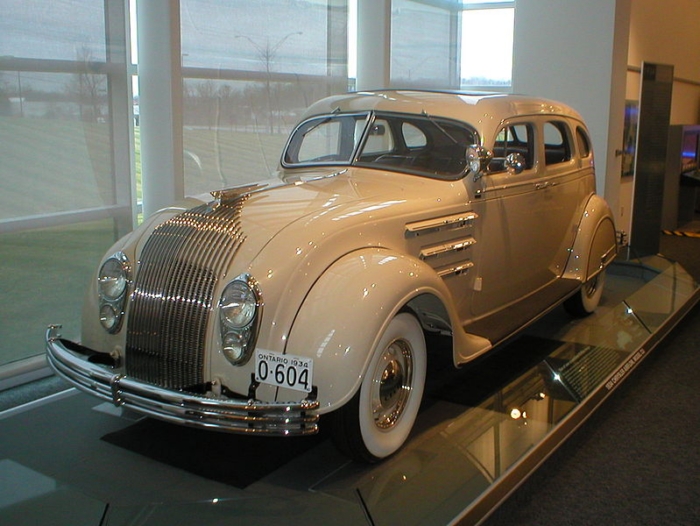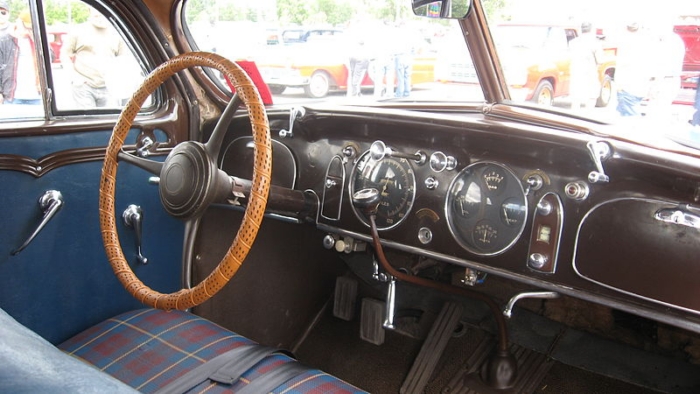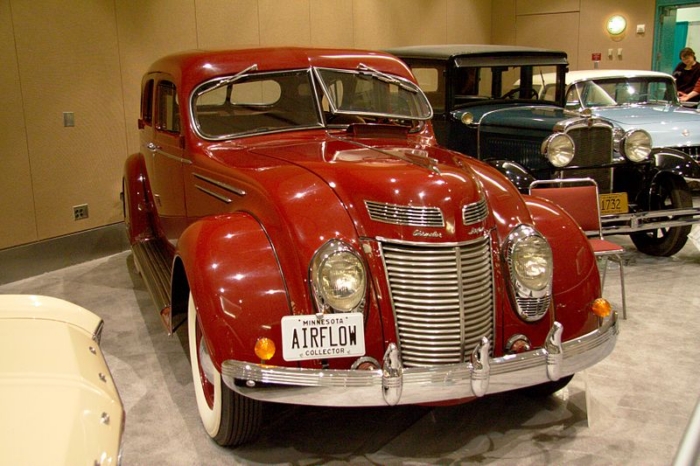When it comes to wheels, the difference between car and truck wheels doesn’t stop at size. Load capability, handling, fitment, price and ground clearance all play an important role in the purchase of OEM and aftermarket wheels. Here are some things to consider when deciding what type of wheels are…
The Chrysler Airflow – A Car Ahead of Its Time
Today, we enjoy the benefits of aerodynamic engineering on a daily basis. Practically everybody understands the effect wind resistance has on the design and efficiency of an automobile, for instance. It may surprise you to learn that in the early days of automobile manufacturing, little attention was paid to the subject. As always, there were a few pioneers who understood the value of a car that could gently glide through the air with less resistance, leading to more efficient vehicles.

1934 Chrysler Airflow
Of all the major car manufacturers, Chrysler was the first company to step out of the comfort zone many manufacturers had found themselves stuck inside of. As such, Chrysler became the first manufacturer to mass-produce an automobile based on “streamlining” as it was referred to at the time.
It won’t sound familiar to younger generations, but that car was the Chrysler Airflow, which was distributed under both the Chrysler and DeSoto brand names, with a few minor differences in design.
Whether or not the Airflow was an attractive automobile is still highly debated today. Regardless, Chrysler deserves credit for attempting to break away from the dominant boxy styles that dominated the industry at the time.
The Airflow was largely a product of engineer Carl Breer, who realized that the high compression engines of the time would never be able to achieve their maximum efficiencies in the body styles Chrysler was designing. Along with two of his associates, Fred Zeder and Owen Skelton, Breer began searching for answers. The trio met with aviation pioneer Orville Wright to find inspiration. Wright suggested building a small scale wind tunnel to test aerodynamics on miniature prototypes. Chrysler took this idea and ran with it, constructing the industry’s first full-scale wind tunnel at the company’s headquarters in Highland Park, Michigan.
The results of early wind tunnel tests provided a surprisingly amusing result. Current Chrysler models were actually more aerodynamic when driven backwards. This shocking revelation led to a new teardrop design and eventually the Airflow. This new understanding of aerodynamics, though an important part of the story, often overshadows an equally important subplot.
The fascinating part of this story lies in the details. The Airflow implemented the first use of unitary design in the auto industry. The Airflow favored steel girders surrounding the passenger compartment instead of the traditional body-on-chassis. Advertised as a safety factor, this new design rode on a conventional chassis. Nevertheless, the concept was proved after an Airflow was tumbled over a 100 foot cliff. The Airflow drove away relatively unscathed.
Passengers were situated within the wheelbase of the Airflow, with 55% of its weight on the front wheels, compared to only 40% in typical autos of the time. This eliminated pitching and rocking and resulted in a much smoother ride. Meanwhile, appreciators of the art deco style enjoyed the aesthetics of the Airflow’s interior, as the seats and instrument panel borrowed heavily from this influential style.

1934 Chrysler Airflow Interior
What caused the Chrysler Airflow to be such a commercial failure? For one, it was such a radical change from what was typical at the time. Time after time, it has been proven that the general public does not readily accept such change unless they are more gradual. Perhaps the real problem was simply the style of the exterior; though it was beautifully designed from an aerodynamic standpoint, most found the overall look of the car to be less than pretty.
The Airflow could have been the dagger in the heart of Chrysler, fortunately for Chrysler they didn’t put all their eggs in the Airflow basket. They continued to produce more conventional designs while the Airflow was on the market and managed to maintain their market position. In 1937, after four years and numerous changes along the way, the Chrysler Airflow was killed. Though its short lived life is often referred to as one of the industry’s biggest commercial failures, its was an engineering success and remains an important part of automotive history.

1937 Chrysler Airflow
At Blackburn’s Wheels, our passion for wheels and hubcaps remains unrivaled. We offer a myriad of wheels and hubcaps for sale. Our business combines the customer service and attention you would receive from a family run business with the prices and buying power you’d only expect from a large corporation. We take pride in providing excellent customer service to every single one of our customers, and strive to continue being a leader in the industry. Whether that pothole sent your hubcap dancing down the sidewalk, or you’re upgrading your classic car with steel rims, Blackburn’s Wheels has a solution for you.





